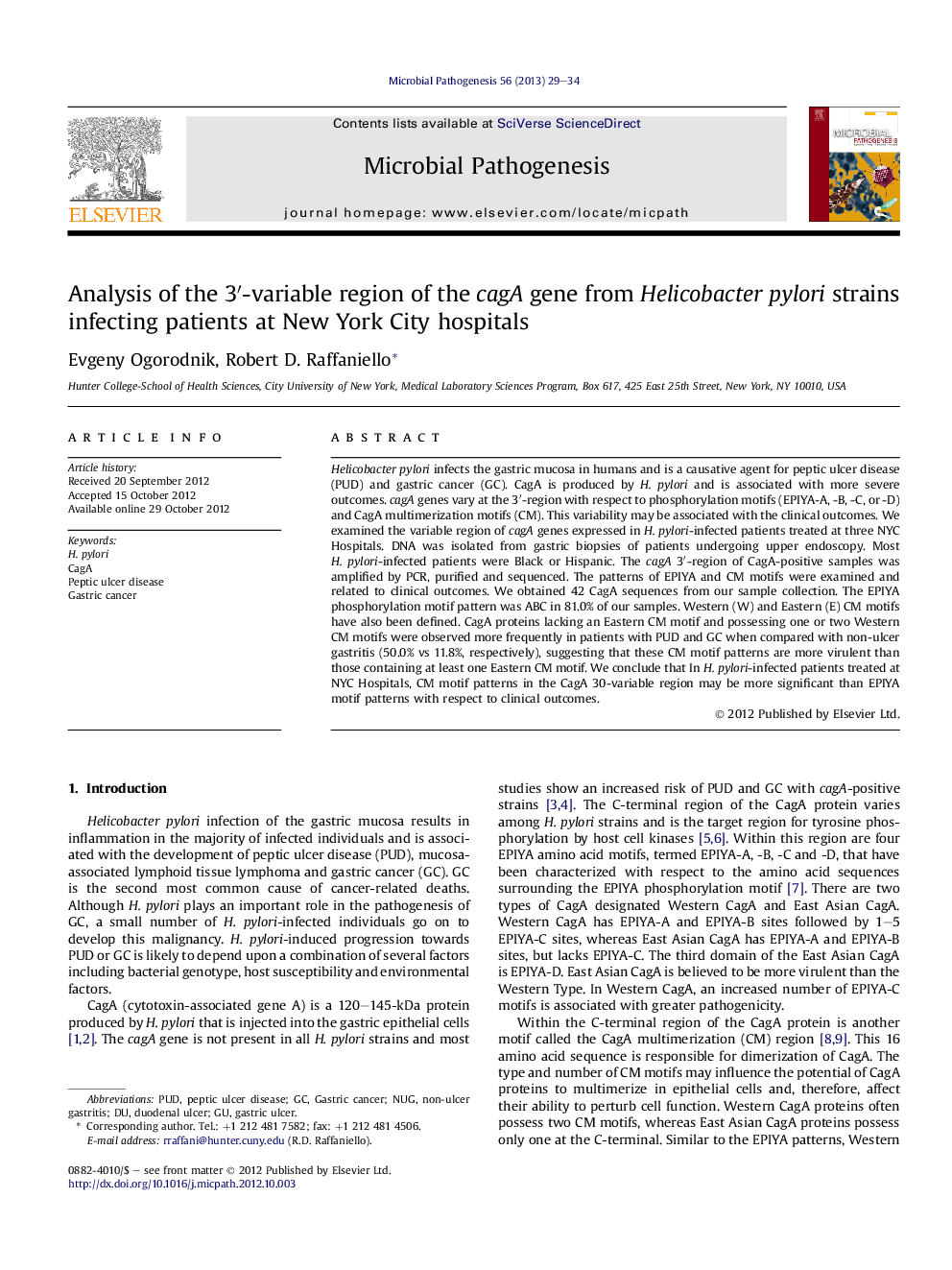| Article ID | Journal | Published Year | Pages | File Type |
|---|---|---|---|---|
| 3416736 | Microbial Pathogenesis | 2013 | 6 Pages |
Helicobacter pylori infects the gastric mucosa in humans and is a causative agent for peptic ulcer disease (PUD) and gastric cancer (GC). CagA is produced by H. pylori and is associated with more severe outcomes. cagA genes vary at the 3′-region with respect to phosphorylation motifs (EPIYA-A, -B, -C, or -D) and CagA multimerization motifs (CM). This variability may be associated with the clinical outcomes. We examined the variable region of cagA genes expressed in H. pylori-infected patients treated at three NYC Hospitals. DNA was isolated from gastric biopsies of patients undergoing upper endoscopy. Most H. pylori-infected patients were Black or Hispanic. The cagA 3′-region of CagA-positive samples was amplified by PCR, purified and sequenced. The patterns of EPIYA and CM motifs were examined and related to clinical outcomes. We obtained 42 CagA sequences from our sample collection. The EPIYA phosphorylation motif pattern was ABC in 81.0% of our samples. Western (W) and Eastern (E) CM motifs have also been defined. CagA proteins lacking an Eastern CM motif and possessing one or two Western CM motifs were observed more frequently in patients with PUD and GC when compared with non-ulcer gastritis (50.0% vs 11.8%, respectively), suggesting that these CM motif patterns are more virulent than those containing at least one Eastern CM motif. We conclude that In H. pylori-infected patients treated at NYC Hospitals, CM motif patterns in the CagA 30-variable region may be more significant than EPIYA motif patterns with respect to clinical outcomes.
► cagA genes expressed in Helicobacter pylori-infected patients at NYC Hospitals were examined. ► The EPIYA phosphorylation motif pattern was ABC in 81.0% of our samples. ► Two CagA multimerization (CM) motifs were present in 91% of the samples. ► CagA proteins lacking an Eastern CM motif were associated with more severe disorders. ► CM motif patterns may be clinically relevant in our population.
